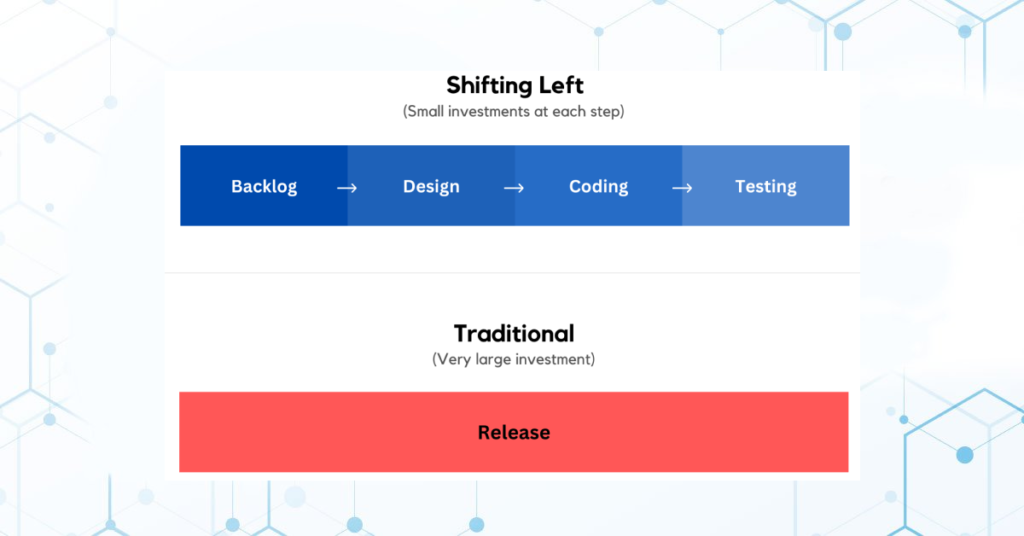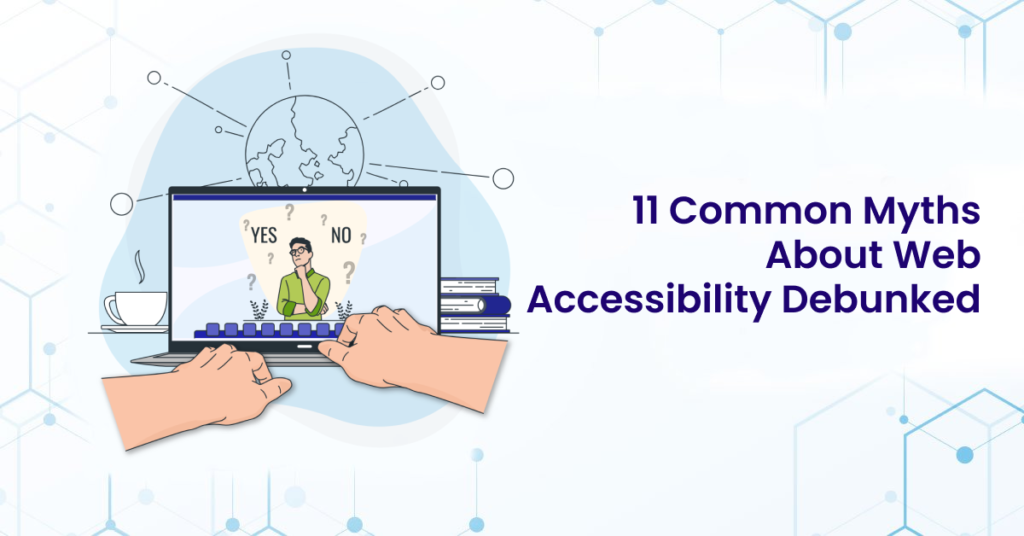Digital Accessibility is super important for organizations and users because it creates an inclusive internet experience. It also provides numerous benefits for businesses. Knowledge about accessibility and its benefits is increasing. Yet, it is surrounded by some misconceptions. These myths and misconceptions negatively affect the awareness about accessibility which can lead to complications in its deployment. In this blog, we’ll break down 11 of those common myths and show why accessibility matters for everyone. We need to remember that creating a proper understanding of accessibility is a big step towards making the web inclusive and better for all.
Myth 1: Accessibility Only Benefits Blind Users
Reality: Web accessibility extends beyond visual impairments. The main aim of web accessibility is to make the internet usable for people with any kind of disability ranging from motor disabilities, cognitive disabilities, etc. An accessible website is also more user-friendly and helps all users access the internet easily. It also helps users with temporary or situational impairments.
Myth 2: Alt Text Is the Only Accessibility Requirement for Images
Reality: While alt text is vital, additional factors like color contrast, layout, and structure contribute to overall accessibility. A WebAIM survey found that 57% of screen reader users consider comprehensive image descriptions crucial for understanding content.
Myth 3: Using Accessibility Overlays Would Fix My Website
Reality: Believing that an accessibility overlay alone can fix accessibility problems is a misconception. Despite being seen as a quick fix, many overlay solutions merely cover up issues and don’t address crucial accessibility problems in your website’s source code. Depending on overlays as a comprehensive solution can pose legal risks, providing a misleading sense of security.
Myth 4: Automated Tools Are Sufficient for Accessibility Checks
Reality: Automated tools are valuable but cannot replace manual testing. The Web Accessibility Initiative (WAI) advises combining automated tools with human evaluation for a more accurate assessment. Automated tools might miss complex issues that real users encounter. At Pivotal Accessibility, our team utilizes manual and automated testing coupled with user testing to ensure that your website is thoroughly checked for all accessibility issues.
Myth 5: Accessibility Compromises Design and Functionality
Reality: Accessible design need not sacrifice aesthetics or functionality. Accessible websites often have better usability for all users. The World Wide Web Consortium (W3C) emphasizes the intersection of usability and accessibility, demonstrating that a design can be both aesthetically pleasing and accessible.
Myth 6: Web Accessibility Is Expensive and Time-Consuming

Reality: Integrating accessibility from the start is cost-effective. W3C notes that addressing accessibility early minimizes the need for retroactive adjustments, reducing costs and development time over the long term. Investing in accessibility is an investment in the sustainability and longevity of a website. Accessibility also pays for itself by helping you to cater to a larger user base, improving your brand image and ultimately increasing your revenues.
Myth 7: Users Don’t Encounter Accessibility Issues on My Website
Reality: Many users may silently leave inaccessible sites. A WebAIM study reveals that 98% of websites have accessibility issues, highlighting the prevalence of challenges users face. Ignoring accessibility issues may lead to a significant loss of potential users and customers.
We provide a range of services to make your website accessible and inclusive for all your customers.
Myth 8: Web Accessibility Only Benefits a Small User Base
Reality: Globally, there are 1.3 Billion people, or 1 out of 6 people having various disabilities. Making your website accessible can help your business cater to a substantially large and untapped market. Keeping this in mind will also help your customers navigate your website with ease, increasing user engagement and satisfaction.
Myth 9: Accessibility is a Feature
Reality: Accessibility isn’t just a feature but rather a continuous practice. This means you need to pay attention to it regularly, whether you’re working on new features or doing maintenance. It’s important to share knowledge about accessibility when a new team member joins or when there’s a change in requirements. If you don’t have an in-house accessibility team, you can consider hiring accessibility service providers on a retainer basis to keep your website’s accessibility intact.
Myth 10: Web Accessibility Is Optional
Reality: Legislation like the Americans with Disabilities Act (ADA), Section 508, AODA, etc. mandates web accessibility as a compliance requirement. Governments in several countries such as the USA, UK, Canada, etc. explicitly state that websites must be accessible. Failure to comply can result in legal repercussions, reinforcing the obligation for organizations to prioritize accessibility.
Myth 11: Accessibility Brings No Additional Benefits
Reality: There are several positive impacts of accessibility for businesses, highlighting that accessible websites are more likely to rank higher in search engines, provide better user experiences, and ultimately provide economic benefits to businesses. Web accessibility also enhances SEO, improves usability, and can lead to cost savings.
Conclusion
Dispelling these myths is essential for fostering an online environment where websites are accessible to everyone. By challenging these myths, we pave the way for a more inclusive and user-friendly digital future. Moreover, embracing web accessibility is not just an ethical thing to do, it is also a strategic move that positively impacts user experience, SEO, and the overall success of a website. It also helps you stay compliant and ahead of your competitors.
Embrace accessibility not as a challenge but as an opportunity to create a digital space where everyone feels welcome. Contact us today to get started on your accessibility journey.

